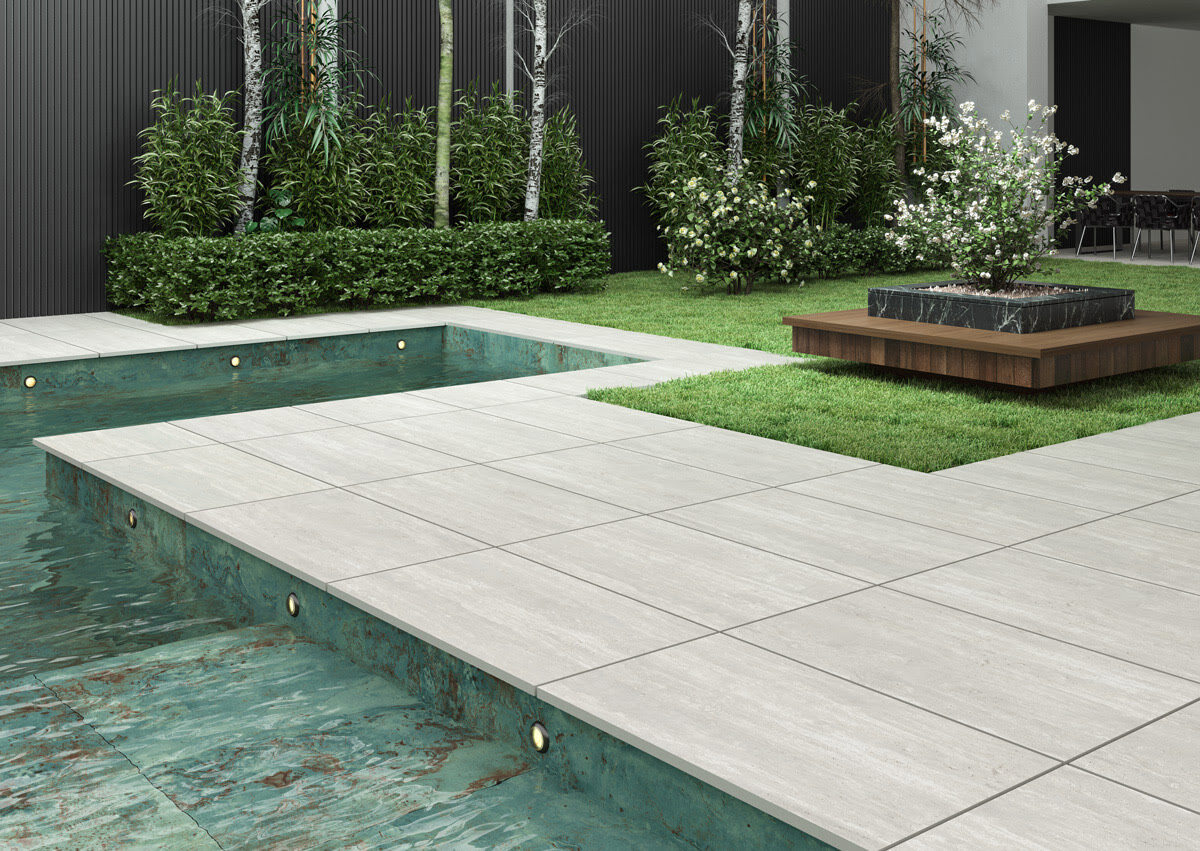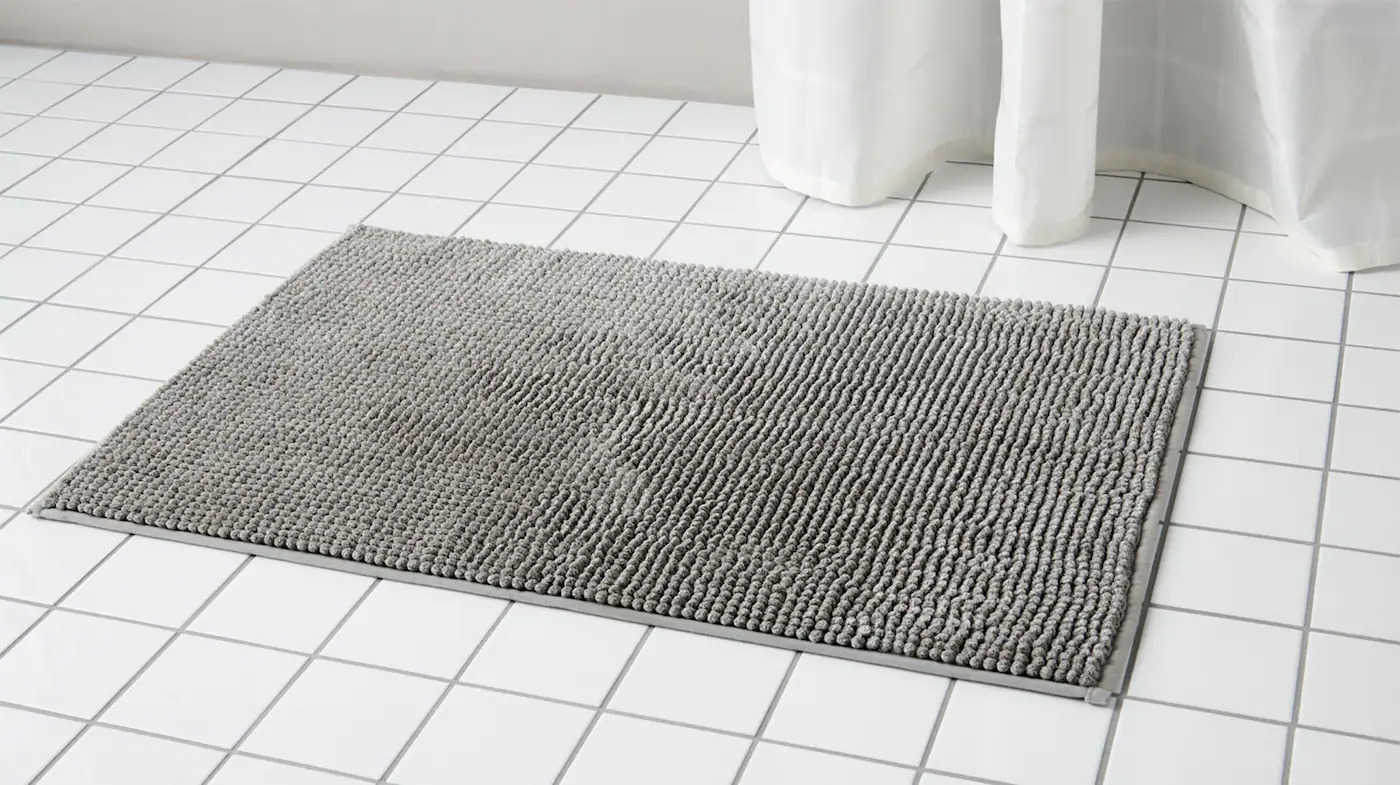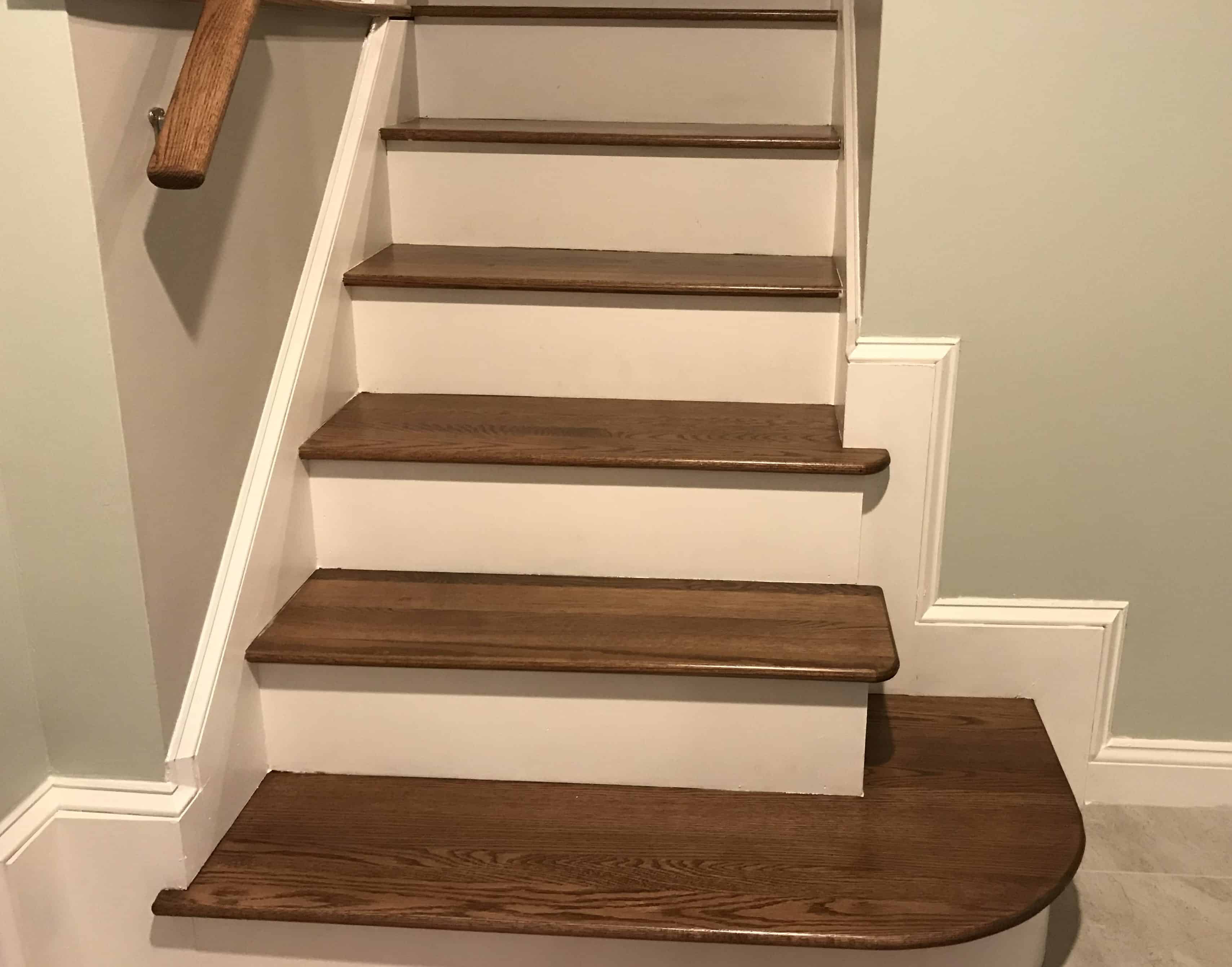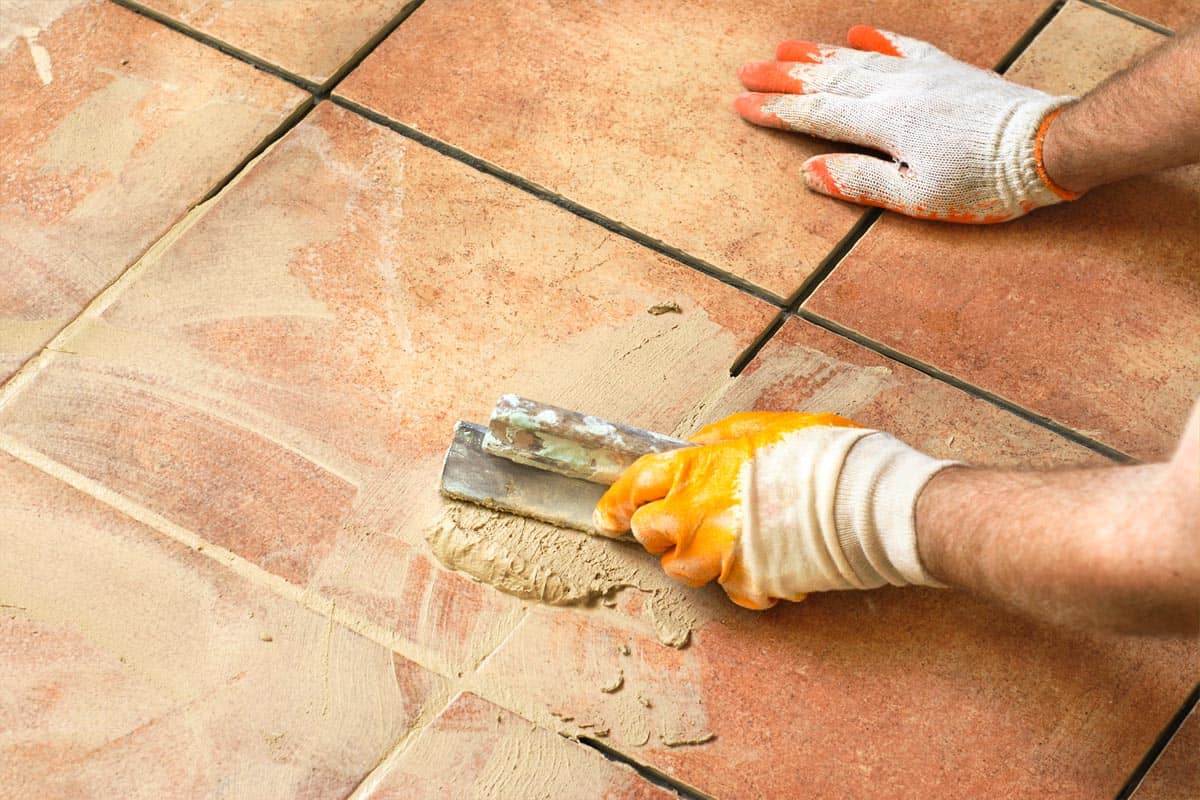Home>Furniture & Design>Outdoor Furniture>How To Make Outdoor Tile Less Slippery


Outdoor Furniture
How To Make Outdoor Tile Less Slippery
Published: January 13, 2024
Learn how to reduce slipperiness on outdoor tiles with these effective tips and techniques. Enhance safety and prevent accidents on your outdoor furniture and design.
(Many of the links in this article redirect to a specific reviewed product. Your purchase of these products through affiliate links helps to generate commission for Storables.com, at no extra cost. Learn more)
Introduction
Welcome to the great outdoors, where the sun shines, the birds sing, and the fresh air invites you to relax and unwind. Whether you have a spacious patio, a cozy balcony, or a sprawling garden, outdoor tiles can elevate the aesthetics of your outdoor space, creating a charming and inviting atmosphere for leisure and entertainment. However, as much as we adore the beauty of outdoor tiles, the issue of slipperiness can pose a significant concern, especially when safety is a top priority.
In this comprehensive guide, we will delve into the world of outdoor tiles and explore effective strategies to mitigate slipperiness, ensuring that your outdoor space remains both stunning and safe for everyone to enjoy. From understanding the underlying causes of slippery outdoor tiles to implementing practical maintenance tips and utilizing non-slip solutions, we'll equip you with the knowledge and tools necessary to transform your outdoor oasis into a secure and stylish haven.
So, whether you're savoring a morning cup of coffee, hosting a lively barbecue, or simply basking in the tranquility of nature, let's embark on this journey to conquer slippery outdoor tiles and pave the way for a delightful, worry-free outdoor experience.
Key Takeaways:
- Choose outdoor tiles made of porcelain or natural stone with textured finishes to reduce slipperiness and enhance safety in your outdoor space.
- Regularly clean and maintain outdoor tiles to prevent slippery buildup and consider using non-slip coatings or mats for added safety.
Read more: How To Make Outdoor Steps Less Slippery
Understanding the Causes of Slippery Outdoor Tiles
Before delving into the solutions for slippery outdoor tiles, it’s crucial to comprehend the factors that contribute to this common issue. By understanding the root causes, you can effectively address the underlying problems and implement targeted solutions to enhance safety and prevent slip-related accidents.
One primary factor that leads to slippery outdoor tiles is the accumulation of moisture. When outdoor tiles are exposed to rain, dew, or even humidity, they can become slick, posing a hazard for anyone walking on them. Additionally, organic matter such as algae, moss, or fallen leaves can further exacerbate the slipperiness, as they create a slimy or slippery film on the tile surface.
Another significant contributor to slippery outdoor tiles is the type of material used. Certain tile materials, such as smooth ceramic or polished stone, inherently possess a higher slip risk, especially when wet. Furthermore, the texture and finish of the tiles play a crucial role in determining their slip resistance. Tiles with a glossy or smooth finish are more prone to becoming slippery, whereas those with a textured or rough surface offer better traction and reduce the likelihood of slips and falls.
In addition to environmental factors and tile characteristics, foot traffic and usage patterns also impact the slipperiness of outdoor tiles. High-traffic areas, such as pathways and gathering spots, are more susceptible to wear and tear, which can diminish the tiles’ slip resistance over time. Furthermore, the presence of oils, lotions, or food spills on the tiles can create slick surfaces, especially in outdoor dining or cooking areas.
By recognizing these contributing factors, you can proactively address the slipperiness of your outdoor tiles with targeted interventions. Whether it involves selecting the right type of tile, implementing regular maintenance practices, or applying non-slip coatings, understanding the underlying causes empowers you to make informed decisions and create a safer outdoor environment for yourself, your family, and your guests.
Choosing the Right Type of Tile for Outdoor Spaces
When it comes to mitigating the slipperiness of outdoor tiles, selecting the appropriate type of tile is a pivotal first step. By opting for tiles that are inherently slip-resistant and suitable for outdoor environments, you can significantly reduce the risk of slips and falls, while simultaneously enhancing the visual appeal of your outdoor space.
One of the most crucial considerations when choosing outdoor tiles is the material. Porcelain and natural stone tiles are popular choices for outdoor applications due to their durability and slip-resistant properties. Porcelain tiles, in particular, are highly resilient to moisture and offer excellent traction, making them ideal for outdoor patios, pool decks, and walkways. Natural stone tiles, such as slate or travertine, also provide a textured surface that enhances slip resistance, adding both safety and elegance to outdoor settings.
Another essential factor to evaluate is the texture and finish of the tiles. Opt for tiles with a textured or rough surface, as they offer improved traction and grip, especially when exposed to moisture. Matte or honed finishes are preferable for outdoor tiles, as they provide better slip resistance compared to glossy or polished finishes. Additionally, consider the size and pattern of the tiles, as larger formats with minimal grout lines can create a smoother, more slip-resistant surface.
Furthermore, the climate and specific environmental conditions of your location should influence your tile selection. For areas with frequent rain or high humidity, it’s advisable to choose tiles with superior water resistance and slip resistance. Additionally, consider the color of the tiles, as darker shades can absorb more heat and may become uncomfortably hot in sunny outdoor spaces, while lighter hues can help maintain a cooler surface temperature.
Lastly, consult with reputable tile suppliers or design professionals to explore specialized anti-slip tiles or coatings designed specifically for outdoor use. These innovative solutions incorporate advanced technology to maximize slip resistance without compromising aesthetics, offering a comprehensive approach to creating safe and stunning outdoor spaces.
By carefully considering the material, texture, finish, and environmental suitability of outdoor tiles, you can make informed choices that prioritize safety and style, ensuring that your outdoor oasis remains a secure and delightful haven for relaxation and recreation.
Regular Maintenance and Cleaning Tips
Effective maintenance and regular cleaning routines are essential for preserving the slip resistance and overall condition of outdoor tiles. By incorporating simple yet diligent maintenance practices, you can prevent the accumulation of slippery substances and maintain the integrity of the tile surface, thereby promoting a safer outdoor environment for everyone to enjoy.
One fundamental aspect of tile maintenance is routine cleaning. Regularly sweeping or using a leaf blower to remove debris, fallen leaves, and organic matter from the tile surface can prevent the buildup of slippery films caused by decaying vegetation. Additionally, periodic washing with a gentle detergent and water can help eliminate dirt, grime, and other substances that contribute to slippery conditions, restoring the tiles’ natural traction.
Furthermore, consider incorporating a mild acidic solution, such as white vinegar diluted in water, to effectively remove mineral deposits, stubborn stains, and algae growth from outdoor tiles. This natural cleaning approach can help restore the tiles’ slip-resistant texture without compromising the surrounding vegetation or the environment.
Another vital aspect of maintenance is addressing the grout lines between the tiles. Over time, grout can accumulate dirt, mold, and mildew, diminishing the overall slip resistance of the tiled surface. Regularly cleaning and sealing the grout lines not only enhances the aesthetic appeal of the outdoor tiles but also prevents the formation of slippery residues, ensuring a safer and more hygienic outdoor environment.
In addition to routine cleaning, proactive measures such as installing proper drainage systems and ensuring adequate slope and runoff can help minimize the accumulation of standing water on outdoor tiles, reducing the risk of slip-related accidents. By maintaining a dry and well-ventilated outdoor space, you can mitigate the impact of environmental factors that contribute to slipperiness, fostering a safer and more enjoyable outdoor experience for all.
By integrating these maintenance and cleaning tips into your outdoor tile care regimen, you can uphold the slip resistance and visual appeal of your outdoor space while creating a secure and welcoming environment for leisure, entertainment, and relaxation.
To make outdoor tile less slippery, consider applying a non-slip sealant or coating specifically designed for outdoor surfaces. This will create a textured surface that provides better traction, reducing the risk of slipping.
Applying Non-Slip Coatings or Sealants
As an effective strategy to enhance the slip resistance of outdoor tiles, the application of non-slip coatings or sealants offers a proactive approach to mitigating slipperiness and promoting a safer outdoor environment. These specialized treatments are designed to provide an additional layer of traction and protection, minimizing the risk of slips and falls while preserving the aesthetic appeal of the tiles.
Non-slip coatings, available in various formulations such as epoxy-based or polyurethane-based solutions, are specifically engineered to create a textured surface on outdoor tiles, enhancing grip and traction. These coatings are applied directly onto the tile surface, forming a durable and slip-resistant layer that withstands outdoor elements and foot traffic. Furthermore, non-slip coatings are customizable, allowing you to choose the level of texture and traction based on your specific safety requirements and aesthetic preferences.
Similarly, sealants with integrated non-slip additives offer an alternative approach to improving the slip resistance of outdoor tiles. These sealants not only provide a protective barrier against moisture, stains, and UV damage but also incorporate non-slip particles or aggregates to enhance traction and grip. By applying these sealants to outdoor tiles, you can fortify the surfaces against slip-inducing substances while maintaining their natural beauty and durability.
Prior to applying non-slip coatings or sealants, thorough surface preparation is essential to ensure optimal adhesion and performance. This process typically involves cleaning the tiles to remove dirt, grime, and any existing sealants, followed by proper drying and, if necessary, etching or roughening the surface to facilitate the bonding of the non-slip treatment. Additionally, selecting the appropriate product that aligns with the tile material and environmental conditions is crucial to achieving long-lasting slip resistance and protection.
By incorporating non-slip coatings or sealants into your outdoor tile maintenance and safety strategy, you can proactively address slipperiness and create a secure, slip-resistant surface that upholds the visual appeal and functionality of your outdoor space. These treatments offer a comprehensive solution to enhancing safety while preserving the charm and allure of outdoor tiles, ensuring that your outdoor oasis remains a welcoming and secure haven for all to enjoy.
Read more: How To Make A Tile Floor Less Slippery
Using Anti-Slip Mats or Treads
For an immediate and versatile solution to mitigate the slipperiness of outdoor tiles, the utilization of anti-slip mats or treads provides a practical and accessible approach to enhancing traction and safety. These specialized accessories are designed to offer reliable slip resistance while accommodating various outdoor settings, from patios and decks to poolside areas and entry pathways, ensuring a secure and stable surface for daily activities and leisure.
Anti-slip mats, crafted from durable materials such as rubber, PVC, or composite blends, are engineered to provide exceptional grip and stability on outdoor tiles, even in wet or humid conditions. These mats feature textured surfaces or patterned designs that effectively enhance traction, reducing the risk of slips and falls while creating a comfortable and secure footing for individuals of all ages.
Similarly, anti-slip treads, available in adhesive or interlocking formats, offer a practical and customizable solution to safeguard high-traffic areas and transition zones on outdoor tiles. These treads are designed to adhere securely to the tile surface, providing a reliable non-slip pathway and minimizing the impact of environmental factors and foot traffic on the slip resistance of the tiles.
One of the key advantages of using anti-slip mats or treads is their versatility and ease of installation. Whether you seek a temporary anti-slip solution for specific events or a semi-permanent enhancement for frequently used areas, these accessories can be readily positioned, rearranged, or removed as needed, accommodating the evolving requirements of your outdoor space.
Furthermore, anti-slip mats and treads are available in a variety of sizes, colors, and designs, allowing you to harmonize their functionality with the aesthetic appeal of your outdoor environment. Whether you prefer discreet transparent treads or vibrant, decorative mats, these accessories can seamlessly integrate with your outdoor decor while delivering essential slip resistance and safety.
By incorporating anti-slip mats or treads into your outdoor tile safety strategy, you can promptly and effectively address slipperiness, creating a secure and stable surface that fosters peace of mind and enjoyment for everyone. These versatile accessories offer a practical and adaptable solution to enhancing traction and safety, ensuring that your outdoor space remains inviting, secure, and ready for leisure and relaxation.
Conclusion
As we conclude our exploration of making outdoor tiles less slippery, we have embarked on a journey to transform outdoor spaces into secure, inviting havens that harmonize safety with style. By understanding the causes of slippery outdoor tiles, choosing the right type of tile, implementing regular maintenance practices, and utilizing non-slip solutions, we have equipped ourselves with the knowledge and strategies to enhance the safety and functionality of outdoor environments.
Outdoor tiles, whether adorning a patio, pool deck, or garden pathway, serve as the foundation for outdoor leisure, entertainment, and relaxation. However, the potential for slipperiness can pose a significant concern, particularly in the presence of moisture, organic matter, or smooth tile surfaces. Through deliberate and informed interventions, we can proactively address these challenges, creating secure and stable outdoor surfaces that prioritize the well-being of all who enjoy them.
By selecting the right type of tile material, texture, and finish, we can lay the groundwork for slip-resistant outdoor surfaces that withstand the test of time and environmental conditions. Furthermore, by embracing regular maintenance practices and cleaning routines, we can preserve the integrity and slip resistance of outdoor tiles, fostering a secure and hygienic outdoor environment.
Moreover, the application of non-slip coatings or sealants, as well as the use of anti-slip mats or treads, offers comprehensive and adaptable solutions to enhance traction and stability on outdoor tiles. These proactive measures empower us to create safe and inviting outdoor spaces that cater to diverse activities and lifestyles, from casual gatherings to tranquil moments of solitude.
As we embrace the beauty and functionality of outdoor tiles, let us also prioritize safety and accessibility, ensuring that our outdoor environments are welcoming and secure for everyone. By integrating the insights and strategies shared in this guide, we can foster a culture of proactive safety and well-being, where outdoor spaces serve as delightful extensions of our homes and hearts.
So, whether you’re savoring a leisurely stroll, basking in the warmth of the sun, or hosting a spirited gathering, may your outdoor tiles embody not only charm and elegance but also steadfast security and peace of mind. Let’s continue to enrich our outdoor experiences with thoughtful measures that transform slippery tiles into safe, stable foundations for cherished moments and cherished memories.
Frequently Asked Questions about How To Make Outdoor Tile Less Slippery
Was this page helpful?
At Storables.com, we guarantee accurate and reliable information. Our content, validated by Expert Board Contributors, is crafted following stringent Editorial Policies. We're committed to providing you with well-researched, expert-backed insights for all your informational needs.















0 thoughts on “How To Make Outdoor Tile Less Slippery”